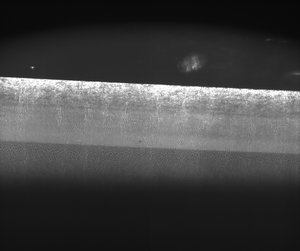
Star rain
This video shows how a metal alloy could look like as it solidifies – using a transparent organic mixture as a stand-in for metals. Likened to a ‘star rain’, the fir tree-like crystallisations that form during the casting of metal alloys are called dendrites. Dendrites can be crucial to the mix – the atomic structures can form a strong and flexible metal or cause a brittle and weak one.
How materials solidify from their melted form can be influenced by many things. Have you ever noticed that the ice cubes in your drinks can be opaque or pristinely transparent? This depends on such factors as the water used and the temperature of your freezer influencing how ice crystals form and solidify.
This variation is the same for metal alloys and can seriously affect the strength and other properties of the final metal. A bolt in a bridge that was cast imperfectly could shear off at any moment, underlining the importance of metallurgy .
Understanding the finer details of how metals form could allow cheaper, better or even new metallic alloys to be made.
Experiments with X-rays allow us to peer into the casting process but ideally researchers should look at the process under normal lighting. Unfortunately, metals are not transparent.
The Transparent Alloy experiment will use organic materials that form molecular crystals as stand-ins for metal. Carefully chosen to be transparent, but solidify like a metal, these mixtures are now on the International Space Station. Held in a glass-wall cartridge, a mixture of succinonitrile, D-camphor and neopentyl glycol will pass through a miniature conveyor-belt furnace to melt and solidify. The process will be filmed by via a microscope and recorded on a hard disk for analysis later on Earth.
Why is this being run in space? Eliminating gravity simplifies the equation: on Earth it can cause the liquid to stir continuously instead of allowing the chemicals to diffuse slowly. Running this experiment on the Space Station allows researchers to focus on specific aspects of the casting process without gravity’s interference.






